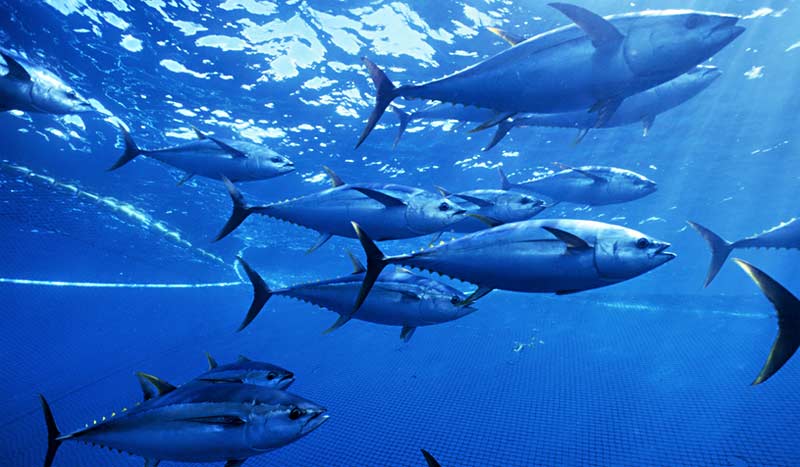
Far from supermarket shelves, in coastal communities, tuna fisheries are extremely important for food security and are a pillar of local economies. In the Indian Ocean, for example, coastal tuna fisheries make up 36 percent of all the tuna caught, and they are caught almost exclusively by artisanal or very basic industrial fisheries.
GLAND, Switzerland – Tunas include dozens of species found across the world’s ocean. These highly valuable fish account for 20 percent of the value of all marine capture fisheries and over eight percent of all globally traded seafood.
Their value has been highlighted recently by the COVID-19 pandemic: Sales of canned fish – of which at least 50 percent is tuna – have surged as consumers stock up on non-perishable foods.
Far from supermarket shelves, in coastal communities, tuna fisheries are extremely important for food security and are a pillar of local economies. In the Indian Ocean, for example, coastal tuna fisheries make up 36 percent of all the tuna caught, and they are caught almost exclusively by artisanal or very basic industrial fisheries.
Beyond their value as food, healthy tuna populations play a role in complex marine ecosystems, making critical contributions to the overall health and resilience of the ocean.
But even before the global health crisis, the health of some tuna stocks has been in peril. In particular, bluefin, yellowfin and bigeye – which account for 15 percent of the total tuna catch catches – are overfished.
Skipjack tuna, the type most commonly used for the canned tuna market, are largely thought to be at a healthy level of abundance. However, a recent surge of skipjack tuna catches in the Indian Ocean resulted in a 30 percent overshoot of catch limit for 2018-2020. With the last stock assessment undertaken in 2017, it is highly probable that skipjack may have been pushed into the “overfished” category already.
read more … wwf.panda.org/wwf_news/press_releases/?363010/Protect-fish-stocks-for-economic-and-ocean-health







